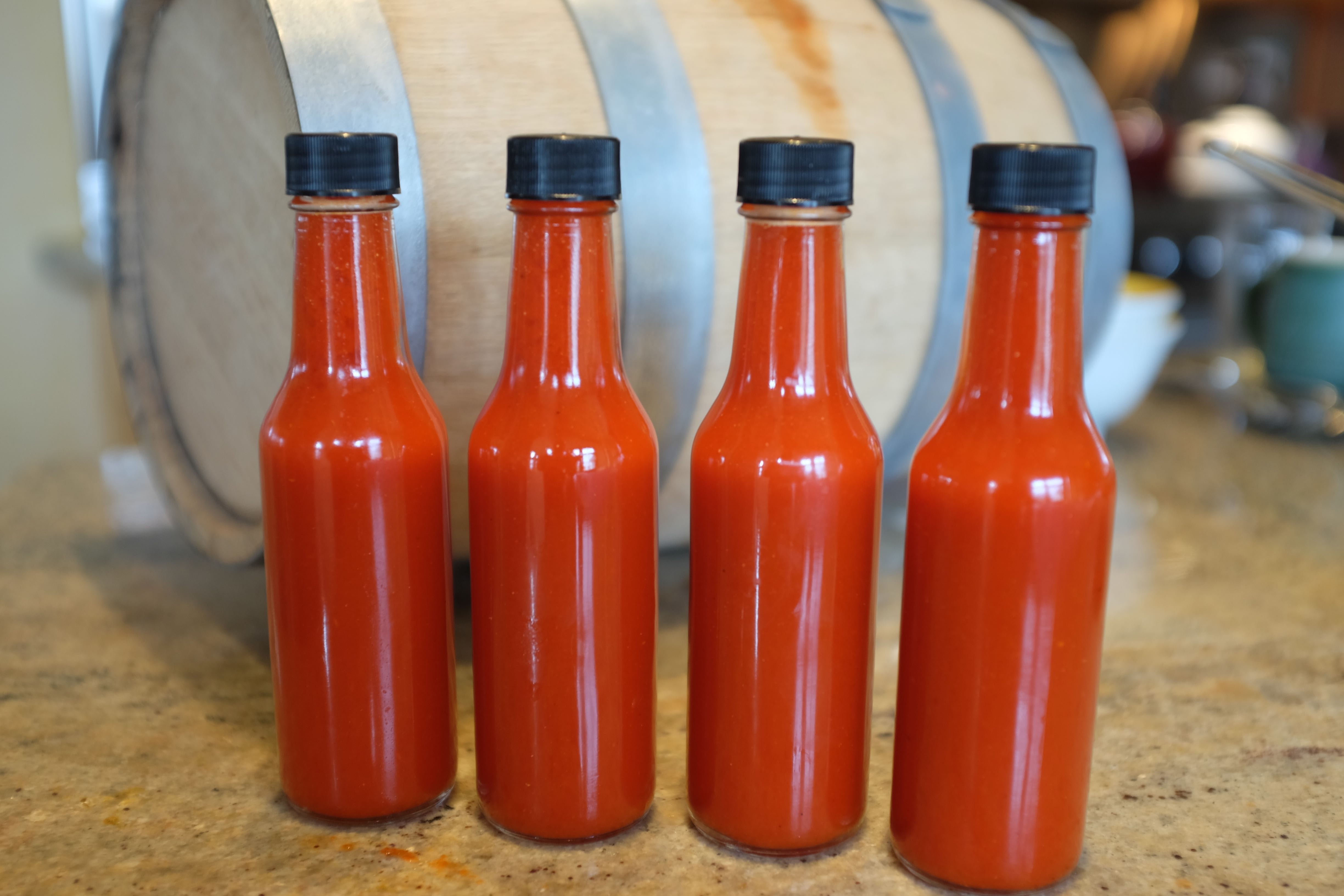
Harvest your peppers, then wash them and remove the stems. You can use a food processor or blender to chop them up into a mash. Alternatively, a vegetable juicer is a good way to extract the juice from ripe peppers. After juicing you’ll want to mix the juice and pulp back together. Next, pour the mixture into a glass jar or crock that has some headroom.

Beware: If you use plastic or silicone tools, those materials will retain some of the peppery heat!
Instead of table salt, look for pickling salt or kosher salt that has no iodine or preservatives. Add enough salt — not too much and not too little. Cover the jar with cheesecloth, which will keep out pests while allowing air to circulate. You can also use a Mason jar with an airlock fitted into the lid. The salt allows Lactobacillales, or lactic acid bacteria (LAB), to establish themselves. In a process called lactic acid fermentation, the bacteria consume the sugars in the juice and produce lactic acid. This lowers the pH of the ferment, which protects it from harmful types of bacteria, and adds a distinctly acidic and delicious flavor.















